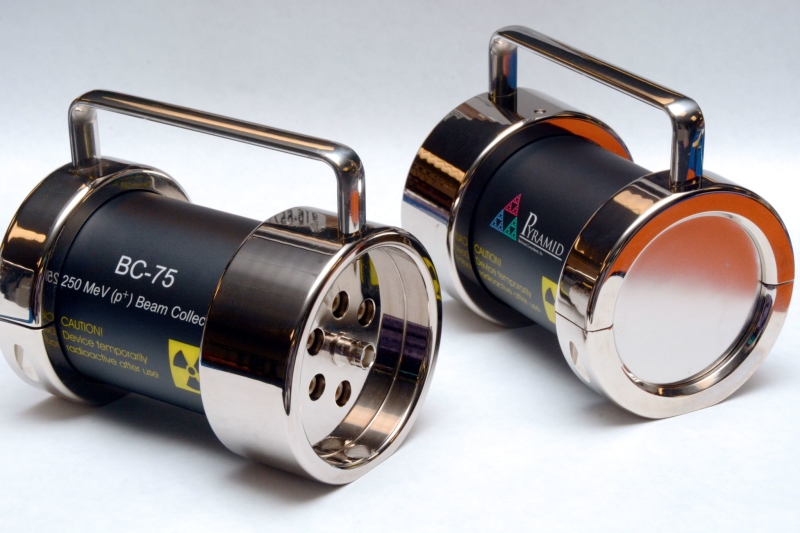New Faraday Collectors!
The Faraday collector is a trusted and direct way of measuring the current of a particle beam. At its heart it is little more than an isolated and screened electrode that can be connected to a sensitive electrometer. The subtlety lies in controlling the secondary electrons that are released by the arriving ions. If these electrons escape from the device when it is measuring a beam of positive ions, the measurement is exaggerated and unreliable.
When the beam energy is high, such as the 50 to 250 MeV proton beams typically used for particle therapy, then there are additional challenges, but also opportunities. The collecting electrode must now be thick enough to stop the beam and the secondary particles it creates completely. But because the beam will travel a considerable distance in air, the Faraday collector can dispense with the usual paraphernalia of vacuum pumping and secondary electron suppression devices and become a compact and robust device that operates in air. The approach was pioneered for proton therapy by Bernie Gottschalk at the Harvard Cyclotron Laboratory. New developments in coating technology have now allowed commercial development of this convenient device, as illustrated by the Pyramid BC-75.
The same approach can be extended by making the beam stopping electrode into a stack of thin layers, each with individual electronic readout. The result is the multi-layer Faraday collector, also explored by Gottschalk, which provides, in addition to the total current, a direct measurement of the beam energy by determining its range in a well-characterized material. The Pyramid MLFC-128 makes this important technique available to the proton therapy community.
Related Products
Latest News
Sales & Technical Enquiries:
sales@ptcusa.comService & Returns:
support@ptcusa.comMedia & Others:
contact@ptcusa.com© 2025 Pyramid Technical Consultants, Inc
